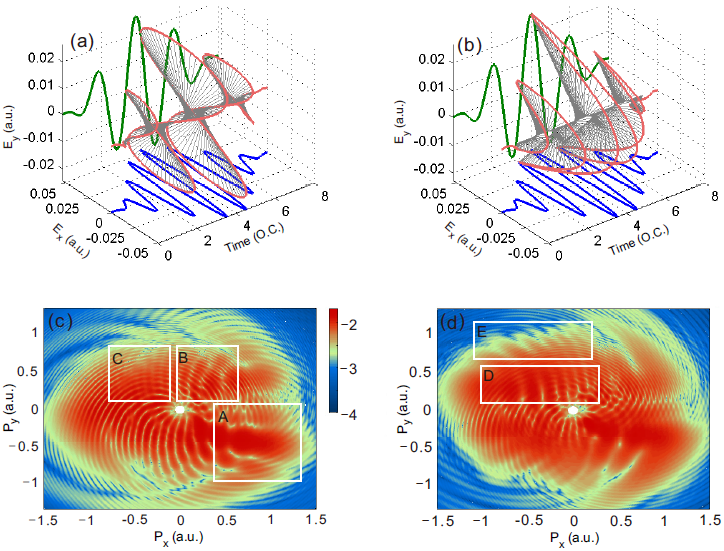When an atom or molecule is exposed to a strong laser field, an electron wave packet canbe ionized through tunneling. The ionized electron wave packet may be driven back to parention, result inan interesting phenomenon calledstrong field photoelectronholography.By analogy to the conventional optical holography, the strong field holography is recognizedas the interference of tunneling electron wave packets drifting directly to the detector(reference wave) and those undergoing rescattering by the parent ion (signal wave).Generally, it is the near-forward rescattering electrons that record the structureinformation of the target. For this near-forward rescattering process, the electrons do not catchmuch information about the core because of the very soft recollision with the core. In order togain more information of the target, one can use the hologram from the direct and backscatteringelectrons, i.e., the backscattering photoelectron hologram (BPH). However, theBPH is usually very difficult to be identified in the experiment.
The ultrafast optics group led by Prof. Peixiang Lupresentsa novel approach to reveal backscattering photoelectron hologram usingorthogonal two-color fields.By carefully adjusting the relative phase of the two-color field, the BPH iseffectively separated from other interferences in the photoelectron momentum spectra and thusthe BPH is unambiguously identified. This takes a significant step to time-resolved imaging ofthe attosecond dynamics with strong-field photoelectron holography.
This work is published on Opt. Express Opt. Express Vol. 24, No. 21, 23697 (2016). This work was supported by the National Natural Science Foundation of China under Grants No. 11234004, No. 11404123 and No. 61275126, the 973 Program of China under Grant No. 2011CB808103, and the Natural Science Foundation of Hubei Province under Grant No. 2014CFB174.

Figure The photoelectron momentum distribution and the backscattering photoelectron hologram in orthogonal two-color fields.